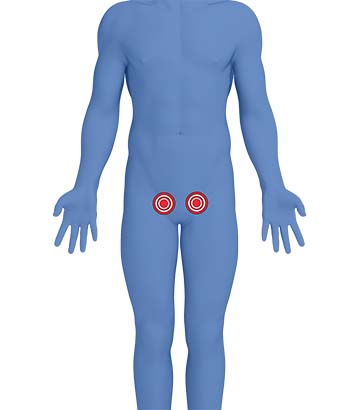What is an Sports Hernia?
Rather it is a painful soft tissue injury that occurs in the groin area. This injury can follow sporting activity. These types of injuries are most often associated with sports or activities involving twisting movements or sudden changes in direction. Of course physical exercise can lead to the formation of a true hernia (see inguinal hernia), but in most cases the sportsman’s hernia represents a tear of the soft tissues in the groin. The predominant symptom is pain on certain movements and the condition is often referred to as athletic “pubalgia”. “Pubalgia” means pain in the pubic area or over the pubic bone.
Symptoms
The diagnosis is usually a clinical one. Often there is a history of an event that lead to the pain but not always. Most people complain of pain in the groin often over or just above the pubic bone. Sometimes this pain is felt a bit lower down right at the top of the inner thigh. The symptoms may be made worse by rotating movements at the hip or in the lower abdomen or by activities such as kicking a ball. In some cases the symptoms will get better with rest, application of ice and simple analgesics.
Treatment
When pain doesn’t settle with simple measures as described then people often seek medical advice. A careful history is taken and examination performed.
Sometimes an ultrasound or MRI scan may be helpful in ruling out a true hernia or identifying the exact site of the soft tissue injury.
Physiotherapy is recommended as first line treatment for most patients with a sportsman’s hernia. The therapy targets strengthening abdominal wall muscle groups around the groin.
Sometimes a local steroid and pain killing injection into the site of injury can be helpful.
Surgery does have a role but only after all the non-operative treatments have been exhausted.
Surgery for sportsman’s hernia can be carried out either via an open operation or via a keyhole technique. It involves reinforcing the inguinal region with a mesh.
An active physiotherapy program should be followed after the surgery
Pain in the groin can be misdiagnosed. It is important to have symptoms fully evaluated by a hernia specialist. Once the diagnosis has been made the approach should be ‘conservative’ in the first instance with surgery only being carried out when symptoms persist.




